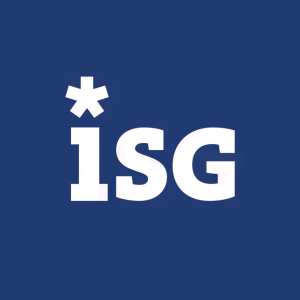Utilities Tackle Disruptions With Asset Management Tools
- Aging power grids and green energy expansion drive adoption of EAM tools and software, boosting efficiency and reducing costs.
- Transition to green energy sources forces utilities to adapt to distributed infrastructure and changing demand patterns.
- New capabilities like cloud computing, AI, analytics, and IoT accelerate innovation in the sector.
- EAM platforms and software enable predictive maintenance and better decision-making.
- None.
Aging power grids, green energy expansion and growing risks make knowledge and control of plants and equipment more essential than ever, ISG Provider Lens™ report says
The 2023 ISG Provider Lens™ global Power and Utilities Industry — Software and Platforms report finds that asset management represents a major expense for water, gas and electricity utilities and EAM software helps them boost operating efficiency, cut emissions and reduce costs while maximizing uptime.
“Power and utility grids are aging, and decarbonization and stricter regulations are placing new demands on them,” said Bob Lutz, partner, Energy & Utilities, at ISG. “For utilities to reliably serve customers into the future, advanced asset management is more important than ever.”
The rapid transition to wind, solar and other green energy sources is forcing electric utilities to adapt to more distributed infrastructure and new energy production patterns, ISG says. At the same time, increasing electrification of buildings and vehicles is changing patterns of demand. More frequent extreme weather events are causing higher damages every year, leading utilities to focus on grid resiliency, reliability and disaster preparedness.
New capabilities made available through cloud computing, AI, analytics and IoT are accelerating innovation by providers, ISG says. EAM platforms and software, along with asset performance management (APM), can track an asset’s age, usage and maintenance history and use analytics for predictive maintenance and better decision-making. Deployment of IoT devices in conjunction with EAM is enhancing utilities’ collection of real-time data on asset performance, which can be used to reduce safety risks and downtime. Looking ahead, better knowledge of existing assets and their performance can better prepare utilities to deliver new products and services.
In their quest to glean more insights from a range of data types, including asset maintenance, weather warnings and customer preferences, utilities increasingly are exploring centralized data storage and cloud-based platforms, the report says. Migrating key workloads to the cloud can increase resiliency, so utilities are working with providers to address challenges to cloud adoption, including regulations affecting the storage of sensitive data and the financing of cloud projects.
“Consolidating information about assets can empower workers, managers and technicians to access data in real time, which accelerates workflows,” said Jan Erik Aase, partner and global leader, ISG Provider Lens Research. “Asset management providers are helping utilities move to more modern data systems.”
The report also explores other utility asset management trends, including the importance of change management and new cybersecurity vulnerabilities that come with intelligent grids.
For more insights into the asset management challenges facing utilities and advice for overcoming them, including pay-per-use options to try out new solutions, see the ISG Provider Lens™ Focal Points briefing here.
The 2023 ISG Provider Lens™ global Power and Utilities Industry — Software and Platforms report evaluates the capabilities of 12 providers in one quadrant: Enterprise Asset Management Software Solutions.
The report names Hitachi Energy, IBM, IFS and SAP as Leaders in the quadrant.
The 2023 ISG Provider Lens™ global Power and Utilities Industry — Software and Platforms report is available to subscribers or for one-time purchase on this webpage.
About ISG Provider Lens™ Research
The ISG Provider Lens™ Quadrant research series is the only service provider evaluation of its kind to combine empirical, data-driven research and market analysis with the real-world experience and observations of ISG's global advisory team. Enterprises will find a wealth of detailed data and market analysis to help guide their selection of appropriate sourcing partners, while ISG advisors use the reports to validate their own market knowledge and make recommendations to ISG's enterprise clients. The research currently covers providers offering their services globally, across
A companion research series, the ISG Provider Lens Archetype reports, offer a first-of-its-kind evaluation of providers from the perspective of specific buyer types.
About ISG
ISG (Information Services Group) (Nasdaq: III) is a leading global technology research and advisory firm. A trusted business partner to more than 900 clients, including more than 75 of the world’s top 100 enterprises, ISG is committed to helping corporations, public sector organizations, and service and technology providers achieve operational excellence and faster growth. The firm specializes in digital transformation services, including automation, cloud and data analytics; sourcing advisory; managed governance and risk services; network carrier services; strategy and operations design; change management; market intelligence and technology research and analysis. Founded in 2006, and based in
View source version on businesswire.com: https://www.businesswire.com/news/home/20230926822038/en/
Press:
Will Thoretz, ISG
+1 203 517 3119
will.thoretz@isg-one.com
Julianna Sheridan, Matter Communications for ISG
+1 978-518-4520
isg@matternow.com
Source: Information Services Group, Inc.







